Independent Collectors
Artemy Troitsky
Sergej Timofejev from Arterritory in conversation with Artemy Troitsky, the relaxed collector and Russian music critic.
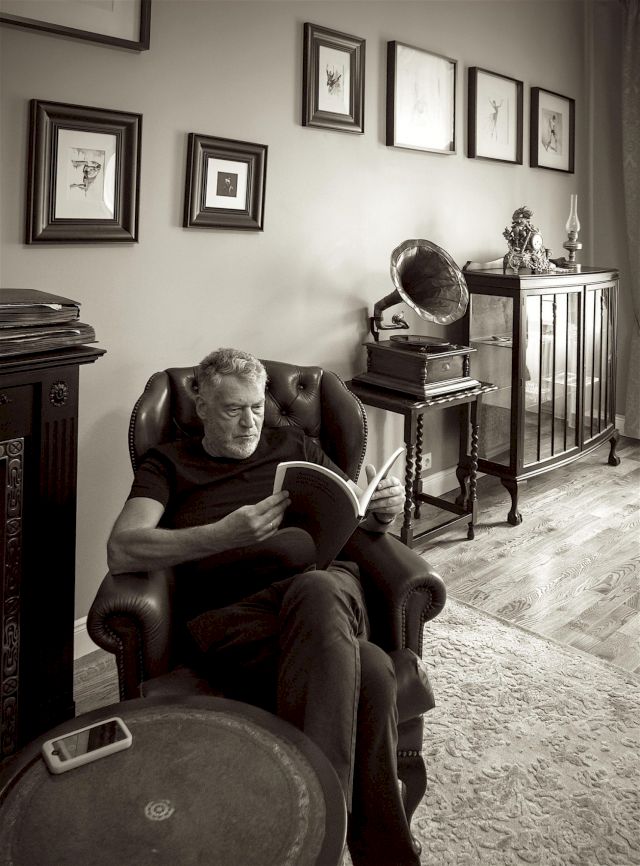
The Relaxed Collector – Sergej Timofejev from Arterritory in conversation in Riga with Artemy Troitsky: Russian music critic and art collector.
A happy, ironic, and life-loving person with excellent taste… is the image that Artemy Troitsky has been projecting for more than two decades now. Having had close contact with the Russian artistic underground scene in the early 80s, he became one of the most popular figures in the perestroika era. Then he wrote the book Back in the USSR: The True Story of Rock in Russia, which was published in the USA, Japan and several European countries. This was followed by many years of television and music programmes and projects, which, in turn, was followed by a strong dislike of the current political situation and atmosphere in Russia. It obviously became too much to bear, and for the last four years Troitsky has been living in Estonia. While all this was going on, he was also slowly accumulating a rather unusual art collection which he has exhibited far and wide – from Vladivostok to Helsinki.
Not too long ago, Troitsky was invited to Riga by Bruno Birmanis for the premier of the Andrey Airapetov film Critic, at BOLD gallery. The film is not only a cross-sectional biography of Troitsky, but also a historical documentation of youth culture in the USSR, a chronicle of the underground music industry, and a guide to Western and Soviet rock music. The premier provided great justification to meet up with Troitsky and converse about his art collection and his overall views of collecting. Quite a few other subjects were touched upon as well…
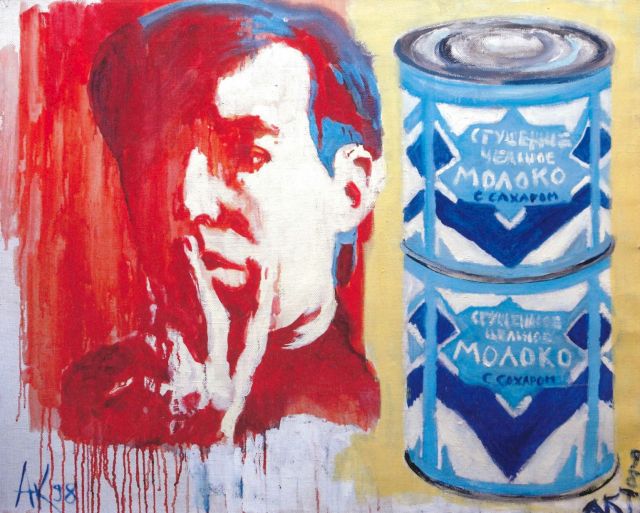
SERGEJ TIMOFEJEV
Did you have a passion for collecting things in your childhood or youth?
ARTEMY TROITSKY
I didn’t have a passion per se, but I did have a laid-back compulsion… In school, I collected postage stamps with animals on them. My father was a rather keen stamp collector, and since I accompanied him to all kinds of stamp markets in Prague, as well as to a special stamp ‘auction’ that took place weekly, I thought I could also begin collecting something. I assembled several albums with stamps that featured animals. I didn’t have any other collections; I’m not a collector by nature. The clearest example of that fact can be seen by the kinds of records I have in my collection. I have an ungodly amount – probably several tens of thousands – but it is no way a collection: they are simply records that I’ve bought…that I kept coming upon and which I liked. I used them for my radio shows, and then I put them on the shelf. Some I gave away, some I sold, but compared to real vinyl record collectors – of whom I know quite a few – and despite their immense number, it is not a collection of any kind. That’s because I’ve never bothered with acquiring rare ones. I have absolutely no interest in getting an album just because it was a limited release in Japan, or because it’s a bootleg. I don’t have anything rare like that. And I don’t follow the principle of having the entire catalogue of one artist, from their first album to the last. As I understand it, my approach is not that of a collector – it’s too relaxed.
SERGEJ TIMOFEJEV
Do you believe that true collecting has to be much more systematic and structured?
ARTEMY TROITSKY
Yes, exactly. True collectors are perfectionists of the highest order. I remember how my father collected his stamps. He had notebooks in which he had listed all of the stamps that he was interested in, with check-boxes next to each one. Over time, he gradually filled in all of those check-boxes with an X – ‘this stamp I have’. See, that’s the approach of a true collector; I’m nothing like that.
SERGEJ TIMOFEJEV
But on the other hand, if we’re talking about the accumulation of art objects, then there are two options – two methods or positions: either a person gets carried away by a certain period in art or certain artists, as a viewer from the sidelines, or, he is himself involved in this flow, this movement in which these artworks appear, and they just naturally lay themselves in his hands. The latter is just a different type of collecting.
ARTEMY TROITSKY
Most likely there are several approaches. One of them – the most respectable and most popular – could be called the scientific approach. An artist, style or period is selected, and the collector tries to maximally subsume this niche. A second approach, which became popular 20 years ago, is what is known as ‘art banking’ – the acquiring of artworks because they are a good investment and their value will soon increase. It’s a rather popular pastime of the ‘New Russians’, and all manner of art experts have them wound around their little fingers. I simply know some collectors of this type, as well as some of the people who do the service of putting together these kinds of collections (and make a lot of money doing it…) I think that this kind of approach is still quite popular in the West, but it has practically stopped in Russia because the art market there has gone down (it’s really weak), and the majority of collectors have emigrated. So, nothing’s happening there; I haven’t heard talk like: today you’ll buy a work by Pupkin for ten thousand euros, but in three years, you’ll be able to sell if for fifty thousand! for ages. And thank God for that!
Probably the third approach, which is my case, is this absolutely spontaneous collecting that is largely dependent on emotions, intuition, and some kind of personal feelings and relationships. There’s nothing greedy or scientific here. My collection began when some of my friends and artists that I was close with began to give me paintings as presents. That was in the late 70s to early 80s, when nothing was sold because we had no art market. If I had been a savvy type, I could of raked in so much stuff back then that I would have been forced to establish an open museum of nonconformist art. I remember how in St. Petersburg, Vitya [Viktor] Tsoi would offer me his paintings that were just lying around – there were about fifteen or twenty of them. They were propped up in a corner and gathering dust; no one needed them. I told him: ‘Vitya, I can’t take your paintings to Moscow. They’re unwieldy…how will I get them onto the train…’ I’ve had countless experiences like this – with St. Petersburg’s ‘New Artists’, with Oleg Kotelnikov, with a lot of different people. But sometimes, when that would happen in Moscow, and if the painting was compact, then I’d say: ‘Sure, I’ll take it! Thanks, I’ll put it up on my wall.’
That’s how I came to have a lot of works by well-known artists, including Kabakov and Pivovarov, some guys form the conceptual generation…but then came the new ones, with whom I had very close and friendly relationships: ‘The Toadstools’, ‘World Champions’, Sven Gundlach, Kostya Zvezdochotov – this whole group. That’s how I came to have a certain number of paintings that I really did hang on my walls.
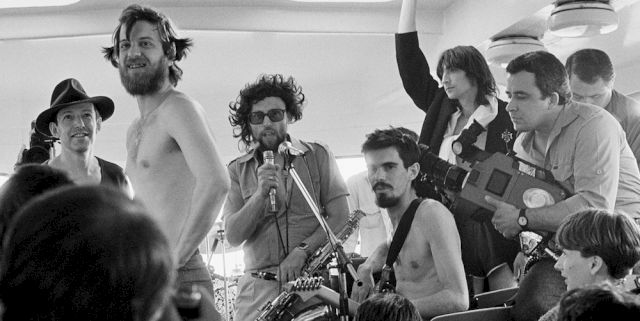
SERGEJ TIMOFEJEV
What do you have by Kabakov?
ARTEMY TROITSKY
Two works. One with a stool and some text that goes something along the lines of: ‘Ivan Petrovich: May I take your stool and sit here? Pavel Terentyevich: Yes, please do, Ivan Petrovich!’ Basically, a typical late-70s Kabakov. The second one is something like an equation, on Whatman filter paper: ‘1 + 2 + a picture of Buratino + 4’… something like that.
And it all happened very quietly and calmly. I’d say the only exotic event was the one with Sven Gundlach, the leader of ‘The Toadstools’ [a Moscow art group formed in 1978; in 1982 they recorded the album Gold Disc on reel-to-reel magnetic tape – ed.], who later became the frontman for the parody avant-garde group ‘The Mid-Russia Uplands’. I’ve always like Sven as both a person and an artist. He had an exhibition in Moscow titled The Jewess and the Mason, but after this he decided to leave the fine arts. Somehow, he had come up with the notion that to work with artistic creation at this time (the early 90s) was shameful. But he’s a true intellectual; he just stopped being an artist. Most of his paintings had been sold by that point, but some he had simply thrown out. And this is how it happened – Sven calls me up and says: ‘I remember that you really liked my painting The Jewess and the Mason.’ (That had been the central painting of his last show.) ‘Yes, it’s a great piece of work,’ I replied. He says: ‘You know that rubbish collection point near my house? There are some bins there – take a look, maybe you’ll find something.’ I immediately took the metro to Voykovskaya station, and as I’m heading to Sven’s house, I see one of those ubiquitous, smelly Moscow rubbish collection points. In it I see a huge, rolled up canvas, two or three metres long. It was a painting, and I rescued it, of course.
That’s how it all accumulated. And then Olga Osterberga, a St. Petersburg gallerist that I knew (D137 gallery), saw them. She had come over to my home and started asking: ‘What is that? And this? Wow! You must show them.’ And so, I suddenly became a popular collector. Moreover, I am completely aware of the reason behind that. It was the mid-aughts, the galleries were coming back to life – even flourishing – and it was important for them to encourage this process and to get across the idea that collecting contemporary art is fashionable, stylish. One of the most effective methods to do this was to organise exhibitions of private collections. And the collectors had to be more or less famous; it was even better if the collector was a fun, talkative type and so on. I was ideal for this role. That’s because most of the people who had contemporary art collections at the time were pretty boring – rich lawyers, millionaire dentists, etc. I’m not even mentioning the bankers. An extremely dull group, and no one was clamoring to hang out with them. Likewise, they themselves didn’t want to be showing off their collections since the money they had amassed, as a rule, had come from suspicious sources.
Olga invited me to do a show at D137 gallery. Then, Vera Pogodina organised a really large exhibition for me at the Central House of Artists. After that, I was going from one place to the next – Riga, Tallinn, Helsinki, Vladivostok, Kiev… I travelled to quite a few places with my paintings, and I concurrently began to actively collect – up to that point, they had simply come into my possession; I hadn’t spent any money on them. So, I began to buy to buy art. I started by buying paintings from my old Moscow friends; a record-amount purchase was the diptych Teacher and Apprentice by Nikita Alekseev, for which I payed 8000 euros. As I was earning a crazy amount from TV at the time, I could afford it. Then I began to buy a lot of paintings during my travels – I had simply come to the conclusion that in terms of ‘value for money’, Western galleries were overall better. I bought in England, Canada, America and Mexico. I had assembled a separate collection of American art, which I showed in St. Petersburg and then Vladivostok. I had become more engaged with all of this than with music.
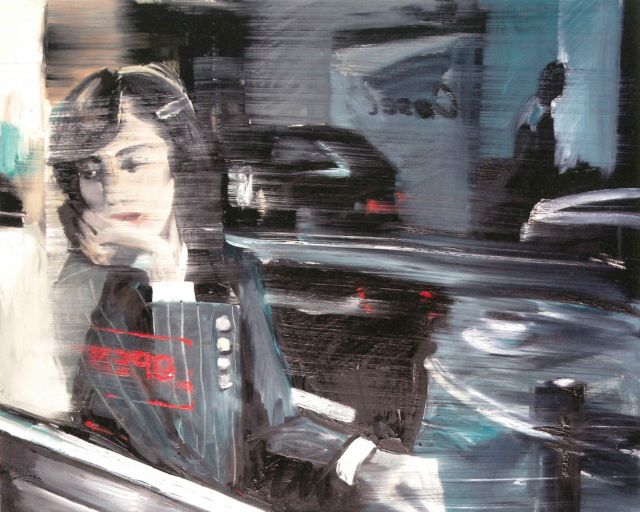
SERGEJ TIMOFEJEV
I saw the press release for the Vladivostok show, and it described the genre as ‘American primitive’.
ARTEMY TROITSKY
Yes, yes; that fits in with my aesthetic taste. On what criteria did I base my purchases? I never looked at the name of the artist, except for a few cases – I have quite a few works done by alternative musicians, so in those cases, the name did play a role. But as a rule, I was interested only in the content of the painting. I simply bought what I liked.
Overall, my relationship to paintings is, speaking with a bit of pathos, much like the one I have with friends. To me, a painting is an object that has a soul of sorts. Of course, it’s not like a person with whom you can talk, have a drink, have them punch you in the face, and so on. But it’s also not an object like a bureau, cabinet or a chair. It is something between an object and a person. A painting has a personality, its own message, and definitely its own mood. And if I feel that I like them – that I would like to have a conversation with this painting – and if the price seems OK, I’ll buy it. It appears that the kind of paintings that ‘hook’ me like this fit into the rather nebulous genre called Art Brut or Outsider Art. Sometimes it’s also called American Primitive, even though that denotes paintings made by Americans, yet I have the same kind from Mexico as well.
I also like horror pieces which are sometimes called pop surrealism. I even have a drawing by the famous director Tim Burton – it’s a sketch for the film The Nightmare Before Christmas. I’ve always really liked all sorts of pictures with skulls, skeletons, horrific scenes, ghosts, rotting flesh and so on.
My collection is very eclectic. In London, I don’t snub the paintings done by street artists – I’ve found some very funny ones by really crazy people. I also really like it when artists use non-traditional materials or objects on which they draw something – for instance, rough planks of wood, the wall of a wardrobe… I have a piece by the Canadian artist John Scott: a bright red lacquered surface on which the image of an angel has been drawn by dripping stearin wax. It’s a wonderful piece! I have quite a few strange paintings, including three-dimensional ones.
SERGEJ TIMOFEJEV
Do you only collect paintings?
ARTEMY TROITSKY
Yes; actually – oil on canvas, graphic art, and drawings – things that can be hung on the wall. Installations, of course, can sometimes leave a strong impression – I’ve seen works by Anish Kapoor and various Japanese artists, but what are you supposed to do with them? It won’t fit in a suitcase; you can’t hang it on the wall. In any case, only a very few works like that have left an impression on me; I’ve seen a great many video works, and except for Bill Viola, I don’t like any of it. Everything else is the dullest of the dull; Andy Warhol already did all of that in 1964 with his films Sleep and Empire. But Viola’s work is interesting because he uses the space, not just the screen. His videos exist in a much more complex and multi-layered realm.
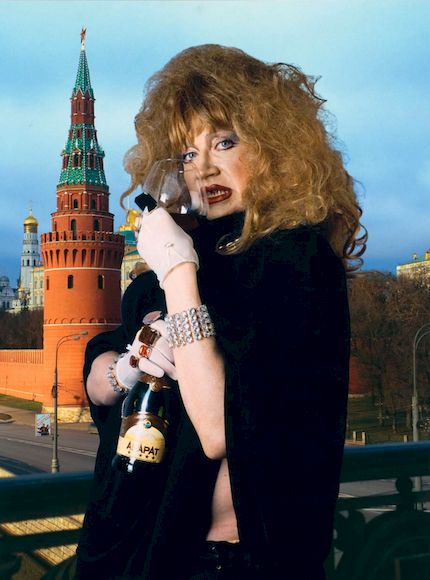
To me, painting is something between an object and a person.
ARTEMY TROITSKY
SERGEJ TIMOFEJEV
Regarding the paintings in your collection – do you ever change around what you have hanging on the walls in your home? Or is it more or less a ‘permanent exhibit’…
ARTEMY TROITSKY
The thing is, my life is rather spread out in a geographical sense. My paintings can currently be found in five different locations. The largest pieces are in a gallery warehouse in Moscow, a bunch are in my summer house near Moscow, another bunch are in another summer house I have near Moscow, a portion are in my Moscow apartment, and the fifth group is in my Tallinn apartment. My whole family – my wife, Vera, and our two children – and I have been living in Tallinn for four years now. There is no way I can transport this whole pile to there, which is why everything is hanging on the walls as when I left it – there’s no way around it. While I still had the chance to change things, I did switch them around because it would become tedious to look as the same things all the time.
SERGEJ TIMOFEJEV
What do you have hanging on your walls in Tallinn right now?
ARTEMY TROITSKY
Basically, it’s what I brought from St. Petersburg. That city has a wonderful gallery called The Pig’s Snout (Свиное рыло), and it features artists from the ‘Kolhui’ group (Колхуи – an abbreviation for ‘magicians’). Kolya [Nikolay] Kopeikin and Vasya Lozhkin are the most well known of the group, and then Andrey Gagodeyev and Igor Vasilyev. They do a kind of satirical and debased political primitivism. Their paintings are very funny and often times quite nasty, too. Kopeikin has sold me his paintings, and even gifted some that he was too scared to exhibit – images of Putin and so on. Vera did, however, ask me put away the painting with Putin because it ruins her mood.
SERGEJ TIMOFEJEV
Indeed. You know a pretty broad spectrum of people from both the visual arts and the music scene. How do you see these two groups – do they have intrinsically different personalities, or is there some cross-over?
ARTEMY TROITSKY
A great question. How I love it when I’m asked interesting questions! I’ll have to quickly think it over…[laughs] and now I’ll answer. In general, they’re pretty different in terms of personality type, yet there are some similarities – they both drink as much, but the artists are much smarter. I’ve been aware for a long time now that most musicians are intellectually quite undeveloped. This applies to the most famous musicians. There are, of course, complete outliers, like Mozart or Jimi Hendrix, who were geniuses already as children. Whatever the case, overall it’s much more interesting to communicate with artists compared to musicians. You can only talk about music with them, and truth be told, I got bored with that forty years ago. Whereas you can talk to artists about a myriad of things – culture, art, politics, the fate of the world and civilisation. On the whole, they have much broader scopes of interest. That’s why I have many more artist friends than musicians, although there are a few exceptions. All of my musician friends – they may not be Mozarts or Jimi Hendrixes, but they’re pretty smart guys. I’m thinking of Makrevich, Shevchuk, Grebenshchikov, Shumov – those are my musician friends. Of course, the most interesting one of them all was Kuryokhin, may he rest in peace…
SERGEJ TIMOFEJEV
He truly was a mega-intellectual…
ARTEMY TROITSKY
First of all, he was a very smart guy, and second, he was a pop-intellectual of sorts; it was always fun and interesting to talk to him. He was a paradoxalist; he would come up with these funny things, provocations – moreover, he would provoke from the heart. And that’s why communicating with him was so wildly interesting – like going to see a good film at the cinema.
SERGEJ TIMOFEJEV
I suppose that artists also think more strategically – they’re looking for their place, creating a position for themselves; musician seem to do things more intuitively…
ARTEMY TROITSKY
Yes, exactly. Musicians are more intuitive; they totally and completely trust their feelings, whereas artists follow a narrative – they have some sort of an intention. I’m thinking about the artists whom I have known personally, but I’m absolutely sure that there are many who just do bad landscape paintings. For instance, the French impressionists (I can’t stand them). And I can totally imagine that Monet (unlike Manet, whom I like very much), or Degas, Renoir and so on, were absolutely dumb guys. But at the same time, they were artistic geniuses. They would take their place by an easel in front of a haystack, and then begin their liturgy to God by depicting this haystack. Do you need any brains for that? Absolutely not. It’s just like – for someone to play the guitar like Jimi Hendrix, the brain is simply an undesirable. It is a pure howl, a pure feeling that is brought to a state of cosmic expression.
SERGEJ TIMOFEJEV
But a lot of people howl.
ARTEMY TROITSKY
One needs to know how to howl.
SERGEJ TIMOFEJEV
But where’s the skill in that?
ARTEMY TROITSKY
Others don’t have the ability for fantasy, they don’t have the energy. But I don’t think it has anything to do with intellect; it is the soul in pure form.
SERGEJ TIMOFEJEV
Have you ever met an artist who impacted you on the level of Hendrix?
ARTEMY TROITSKY
There are such artists, but not among the ones I know personally. That is, my favourite artists are the classics – Goya, Toulouse-Lautrec…and Francis Bacon, who’s a bit more closer to us, time-wise.
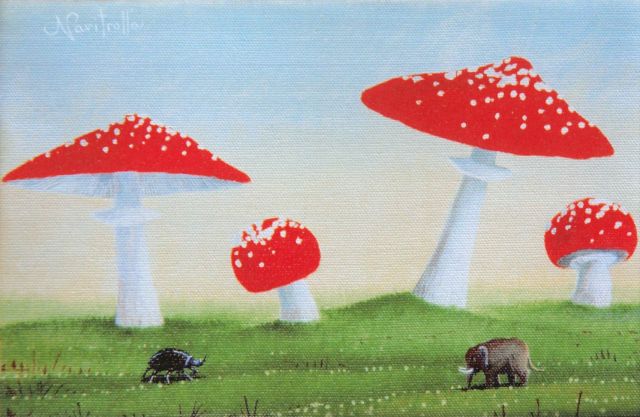
SERGEJ TIMOFEJEV
How about any of the Moscow or St. Petersburg artists? You mentioned Sven Gundlach, perhaps Mamyshev-Monroe…?
ARTEMY TROITSKY
Vladik – he’s my best friend; when I think about him, I immediately get tearful. But I don’t view him as an artist per se. Vladik was an all-round genius. Simply unique. Easy, fun, unpredictable. But at the same time, he was not just a human but something much greater.
I have good relationships with Vladimir Dubossarsky, the guys in St. Petersburg that I mentioned earlier…
SERGEJ TIMOFEJEV
What about the previous wave – Timur Novikov, Afrika…?
ARTEMY TROITSKY
Well, I don’t view Afrika as being an artist; Afrika is a huckster with a penchant for art and, well, he’s a lowlife too. Timurchik… again, we once were close friends. And he was, of course, an interesting guy. Unfortunately, just like with Kuryokhin, my friendship with him soured right before he died – they both became such ultraconservatives, partly even fascist, and, of course, I didn’t like that very much. I understood their motivation – it was a rather natural reaction to the unscrupulous liberalism of the 90s in Russia. As far as I remember, I didn’t even talk about this subject with Timur. I did speak about it with Kuryokhin, because I was closer to him. I simply told Kuryokhin that I understood where he’s coming from, and that I’m just as sick and repulsed by all of these nouveau riche, and all of this mess with Gaidar and Yeltsin – but still, there is a red line that I will not cross – a line that, I believe, a person simply should not cross. And fascism is one of those lines. Kuryokhin thought that Hitler was a great Romantic artist… What more can one say…?
I was friends with Timur, but his art never really inspired me. I believe that, as a cultural phenomenon, he was absolutely worthy of the praise he received, but I think he is grossly overrated as an artist. I have only one painting of his, and it’s not a forgery. I know that Russia (and not only) is full of forged ‘rags’ supposedly made by Timur… I won’t say who is printing them, but it’s a fact.
Another interesting artist and unique persona (I’d probably put him second, after Monroe, as an outstanding example of a human being) is Georgiy Guryanov – ‘Gustav’. This is another case in which I very much liked the person (he was the number one dandy in St. Petersburg in the second half of the 20th century), but his art – all of those sailors, pilots… But Gustav did have one painting that I always liked: a scene in which a romance is being played out by a piano. Absolutely atypical for him. It was put up for sale for ninety thousand dollars… so there went that. But overall, through and through, his creative work left me unimpressed. Even though, back then, I could have gotten some of his sketches (if not works on canvas), and those alone would now be worth at least ten thousand.
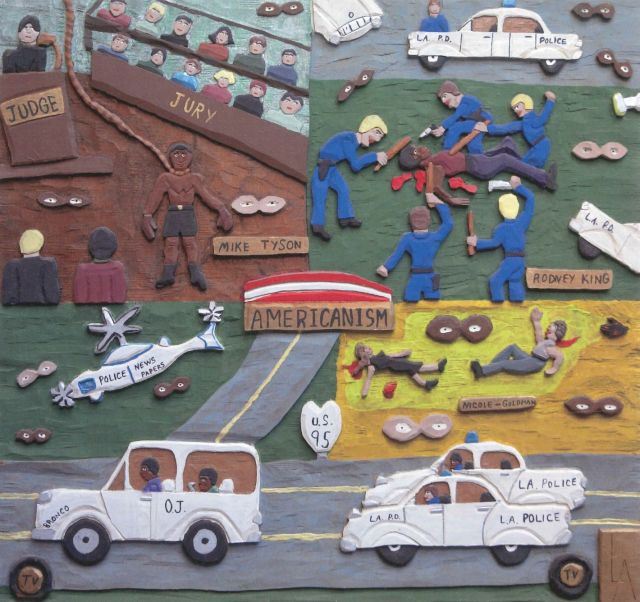
SERGEJ TIMOFEJEV
Continuing with the subject of Novikov and Kuryokhin – could their going over to the ultra-right wing also have been a reaction to the fact that the West had lost interest in art coming from this part of the world – considering that earlier, in the late 80s/early 90s, they had experienced a flurry of interest from the West? It makes one think that…
ARTEMY TROITSKY
It turned out that they weren’t in demand.
SERGEJ TIMOFEJEV
Yes – they felt that they didn’t attain their fairly earned positions in the art market at large.
ARTEMY TROITSKY
I think that there was this sort of a syndrome. Definitely in Kuryokhin’s case. Bot Kuryokhin and Novikov were darlings of the art world, especially at the end of the 80s. Kuryokhin’s paintings were being bought, Pop-Mekhanika was touring the world with great success, etc. And then it ended. I remember speaking with Kuryokhin in St. Petersburg just after he had returned from America, where he had participated in an international jazz piano competition in Washington. He was extremely resentful and extremely angry. Angry…like Putin, and vindictive. But had happened? Without a doubt, he had played better than anyone, because he was a genius. He was ten times better than everyone else. Yet there, he didn’t even place. The local panel of judges had given first place to someone, I don’t remember who…maybe a good jazz pianist. But what Kuryokhin was most bitter about was that second place went to the rather well-known jazz pianist Aziza Mustafa Zadeh from Azerbaijan. It’s easy to see why she was awarded second place – pure political correctness: a minor country, and a Muslim one, to boot, and on top of that – she was a girl. A kind of full-fat, politically correct exotica. And Kuryokhin was simply torn apart with indignation by this. I think this played a role in his ‘going mad’ later on.
SERGEJ TIMOFEJEV
Perhaps that was a part of the bigger picture that led to what is going on in Russia right now – they came out towards the West with arms wide open, yet at the time, it seemed to many that there was no place for either Russia’s artistic elite nor the country as a whole.
ARTEMY TROITSKY
Love ’em and leave ‘em. Yes, it’s like that. But after something like that, you usually ask who is to blame, and what do we do? But I think that no one is to blame except for our own ‘boys’. They were a disappointment to the rest of the world. Both the musicians and the artists. I went to the Kabakov exhibition at the Hermitage – it’s now called Ilya and Emilia Kabakov: Not Everyone Will Be Taken Into the Future. I walked through the exhibition, and I didn’t feel anything except sadness and boredom. It’s all the same – complete repetition. Kabakov has, however, cemented his name in the West, and that makes the insult even worse – Why does Kabakov, who has been out of style for ages, have such success, while we, who are so good, are not wanted? Well, if you’re not wanted, you can’t force someone to want you. You didn’t manage to squeeze into this world-level party; you just didn’t. But see, Ai Weiwei did squeeze in, as did a whole bunch of artists from East Germany. Did they come from different kinds of situations? No – from exactly the same kind.
SERGEJ TIMOFEJEV
Yet they did have more of something…
ARTEMY TROITSKY
First of all, they had more civil responsibility/energy (I’m talking about Ai Weiwei here). Russian artist don’t have anything like that. If it’s even possible to talk about some sort of protest-rock or protest rap music, or, to a certain extent, protest theatre, then in terms of literature, film and the fine arts, there is no shift towards the act of protesting. There was one shift, called Pussy Riot, and also Pyotr Pavlensky. Both the former and the latter quickly gained world fame. But then, as Russians usually do, after a successful start, they fuck everything up as if according to plan. What can you do… Even the pop duet tATu were world-famous for just one year.
SERGEJ TIMOFEJEV
Last question: what’s the latest addition to your collection?
ARTEMY TROITSKY
As I said before, the last acquisition is from St. Petersburg. I don’t go to exhibitions in Moscow – I don’t know anything, I don’t see anything. But in St. Petersburg, I did acquire two ‘Kolhui’ group paintings: Kolya Kopeikin’s Piggy Pop, and a very suggestive, powerful painting that scares everybody, by Igor Vasilyev – I don’t even know what it’s called… But Vasilyev has invented a very interesting technique – he makes everything with coloured cellophane tape, and it turns out very impressive. Vera and I both were so very enchanted by this painting that it’s now hanging in a place of honour in our home in Tallinn.
This interview was originally published in Arterritory’s “Conversations With Collectors, No. 6”.
Order the latest issue of the magazine here.